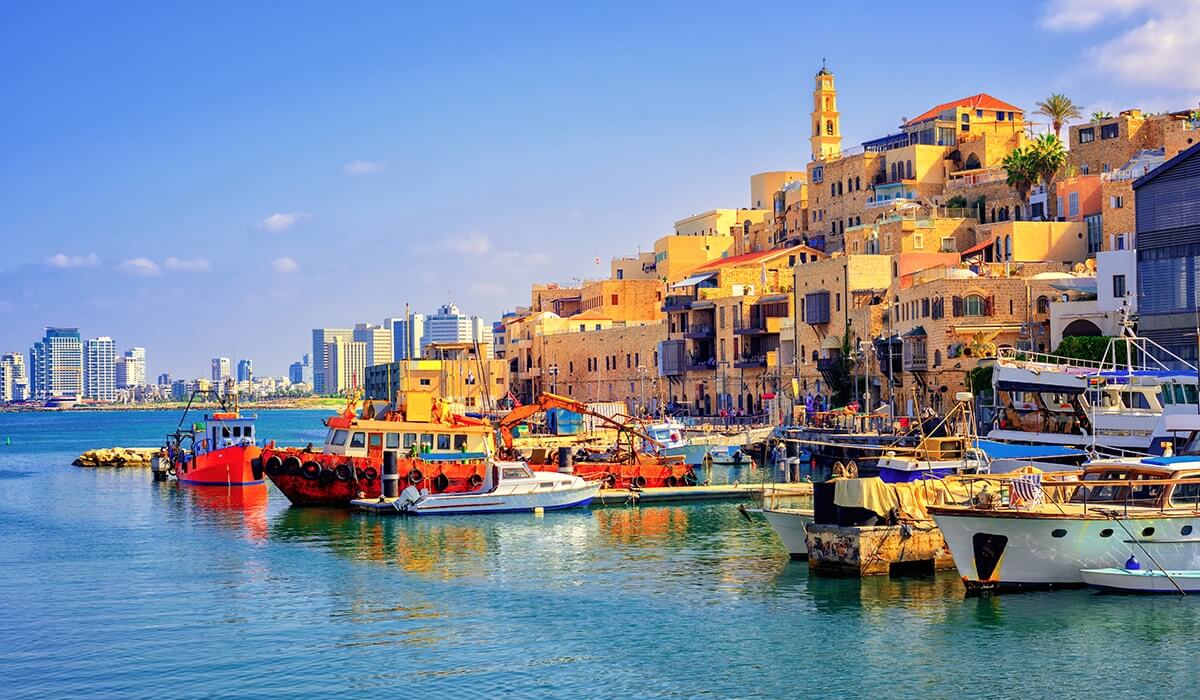Religious tourism has surged in the country, particularly post-Covid. Experts anticipate that the inauguration of the Ram Temple will accelerate this growth, as an increasing number of travellers seek to include religious destinations in their holiday plans, writes Prasenjit Chakraborty.
Whether referred to as Spiritual Tourism, Religious Tourism, or a Sacred Journey, this sector of tourism in India has gained significant momentum following the inauguration of the Ram Temple in Ayodhya last month. While it may seem that this development will primarily boost domestic tourism, its impact is not limited to that; it is expected to influence the inbound tourism sector as well, albeit with varying magnitudes.
Jefferies (an investment bank) predicts that the South Asian country, home to the world’s largest Hindu population, could witness a substantial increase in tourist numbers, ranging from 50 million to 100 million annually, following the inauguration of the new Ram Mandir in the northern city of Ayodhya. This projected influx to the temple is anticipated to surpass the yearly visitors to iconic landmarks such as the Taj Mahal in India (6.5 million), Vatican City in Rome (9 million), and Mecca in Saudi Arabia (20 million), as indicated in the report.
The investment bank also highlighted the strong spiritual, historical, and cultural significance of other religious sites in India, such as the Tirupati Temple in Andhra Pradesh, drawing 25 million visitors annually, and the Vaishno Devi Temple in Jammu and Kashmir, attracting 8 million visitors per year.
 Jyoti Mayal, President, TAAI, said that religious tourism, or the sacred journey of the soul, is one of the oldest and most profound forms of tourism in India. “The country, a kaleidoscope of cultures and faiths, beckons millions of pilgrims and seekers every year, who flock to its various holy places, monuments, and festivals. They come to witness the divine splendour, to feel the spiritual energy, and to partake in the rituals and traditions that have been passed down for centuries,” Mayal opined.
Jyoti Mayal, President, TAAI, said that religious tourism, or the sacred journey of the soul, is one of the oldest and most profound forms of tourism in India. “The country, a kaleidoscope of cultures and faiths, beckons millions of pilgrims and seekers every year, who flock to its various holy places, monuments, and festivals. They come to witness the divine splendour, to feel the spiritual energy, and to partake in the rituals and traditions that have been passed down for centuries,” Mayal opined.
According to the latest statistics, religious tourism in India is set to reach new heights in 2024, especially after the grand opening of the Ram Mandir in Ayodhya, which is expected to attract millions of devotees every year. “The temple, a symbol of faith and resilience, stands on the banks of the Sarayu River, where Lord Ram is believed to have been born. Other sacred sites, such as the Kashi Vishwanath Corridor, the Mahakal Corridor, the Tirupati Temple, and the Vaishno Devi Temple, are also witnessing a surge in popularity and accessibility among tourists,” she said. These places offer a glimpse of the diverse and vibrant expressions of Hinduism, from the ancient to the modern, from the serene to the ecstatic.
Religious tourism is not only a lucrative and employment-generating sector for the country, but also a catalyst for social harmony, cultural exchange, and national integration. As India emerges as a global pilgrimage hotspot, it also faces some challenges, such as ensuring the safety and security of the tourists, preserving the cultural and environmental heritage of the religious sites, and enhancing the quality and diversity of tourism services and products. The infrastructure needs to gear up to handle the influx of tourists.
There is a huge untapped potential in the religious tourism segment. People are flocking in huge numbers to pilgrimage sites as more than 60% of tourism in India is associated with religious and spiritual tourism. “I believe that collaborative efforts between travel agencies, religious organizations, cultural bodies, and the stakeholders, including the government, the private sector, the civil society, and the tourists themselves, need to work together to make it a sustainable, inclusive, and rewarding experience for all,” pointed out Mayal.
Unfortunately, the majority of religious and spiritual tourism activities revolve around the unorganised sector. This means, there are currently only a limited number of organised entities providing services for religious tourism in India. Traditionally, the industry has primarily focused on inbound and outbound sectors, neglecting domestic tourism for a long period. The realisation of domestic tourism’s true potential emerged during the Covid-19 pandemic, and the segment played a crucial role in sustaining the industry. Perhaps, the Ram Mandir in Ayodhya has opened a new vista for the religious tourism sector. Of course, there are challenges on different fronts in terms of manning crowd, infrastructure etc.
 Rajiv Mehra, President, IATO, pointed out, “Most of the religious and spiritual tourism activities are centred around the unorganised sector, barring a few exceptions of organised travel forces. There are new regulations being announced and hotel developments are in the pipeline. But it will take some time to stabilise because a traveller wouldn’t want to stand in long queues for hours for seeking the diety’s darshan. Immediate enforcement of measures is crucial to regulate steady movement of pilgrims, and in due course, it will be smoothly regulated.”
Rajiv Mehra, President, IATO, pointed out, “Most of the religious and spiritual tourism activities are centred around the unorganised sector, barring a few exceptions of organised travel forces. There are new regulations being announced and hotel developments are in the pipeline. But it will take some time to stabilise because a traveller wouldn’t want to stand in long queues for hours for seeking the diety’s darshan. Immediate enforcement of measures is crucial to regulate steady movement of pilgrims, and in due course, it will be smoothly regulated.”
 According to PP Khanna, President, ADTOI, in just six days, nearly 1.3 million devotees visited the Ram Mandir. “The surge in spiritual tourism presents significant opportunities for local entrepreneurship. With its robust infrastructure, proactive leadership, and favourable environment, the future appears promising for the residents, the state, and the country,” said Khanna.
According to PP Khanna, President, ADTOI, in just six days, nearly 1.3 million devotees visited the Ram Mandir. “The surge in spiritual tourism presents significant opportunities for local entrepreneurship. With its robust infrastructure, proactive leadership, and favourable environment, the future appears promising for the residents, the state, and the country,” said Khanna.
Prior to the inauguration of the Ram Temple, various digital travel platforms experienced a significant surge in searches for Ayodhya, leading to the introduction of new offers. Cleartrip and Flipkart Travel, for instance, recorded an impressive 1,500% increase in Ayodhya-related searches across their platforms. This surge inspired them to introduce ‘Darshan Destinations.’

“As a customer-centric company, Cleartrip caters to the evolving needs of our user base. We understand that spiritual journeys are central to our culture, embodying centuries-old traditions. With more people seeking out these meaningful travels, we wished to make these experiences more accessible and affordable. We are excited to kick off the offering with the upcoming opening of the Ram Mandir in Ayodhya. Our offering, specially tailored for senior citizens who desire to soak in the country’s rich heritage, reflects our commitment to meeting the diverse needs of our customers,” said Ayyappan Rajagopal, CEO, Cleartrip.
Similarly, MakeMyTrip, has revealed an impressive 97 per cent surge in searches for spiritual destinations over the last two years (Comparing Calendar Year 2023 to Calendar Year 2021). The focus is particularly on Ayodhya, in anticipation of the consecration ceremony of the Ram Mandir. Ayodhya is notably prominent, witnessing an extraordinary 585 per cent increase in searches among the top 10 pilgrimage and spiritual locations that are currently garnering heightened attention.
This data, extracted from on-platform engagements, underscores a discernible shift in travel preferences, signaling an increasing inclination towards spiritual journeys. In the comparative analysis of popular spiritual destinations from Calendar Year 2023 to Calendar Year 2021, the top 10 locations demonstrating substantial growth include Ujjain (359 percent), Badrinath (343 percent), Amarnath (329 percent), Kedarnath (322 percent), Mathura (223 percent), Dwarkadhish (193 percent), Shirdi (181 percent), Haridwar (117 percent), and Bodh Gaya (114 percent). “On-platform searches for Ayodhya from within India have witnessed a remarkable surge of 1806 percent since the official announcement of the temple’s inauguration,” said MakeMyTrip in press release.
What is interesting is, Ayodhya’s charm reaches far beyond the confines of the nation, drawing significant international attention. MakeMyTrip reported (Search data till 12Jan, 2024) that Global searches for Ayodhya are on the rise, with the United States leading at 22.5%, closely trailed by the Gulf region at 22.2%. Canada (9.3%), Nepal (6.6%), and Australia (6.1%) are notable contributors as well, showcasing widespread global interest in gathering information about Ayodhya.
People in the industry said that the religious fervour is expected to lead to enduring business prospects, driven by the ongoing infrastructure development of pilgrimage centres. The surge in spiritual tourism is remarkable, with numerous pilgrimage centres witnessing substantial foot falls from pilgrim tourists. Industry insiders are optimistic that Ayodhya will also emerge as a major attraction for Non-Resident Indians (NRIs) residing abroad, eventually finding its place in the travel itineraries of international visitors.






